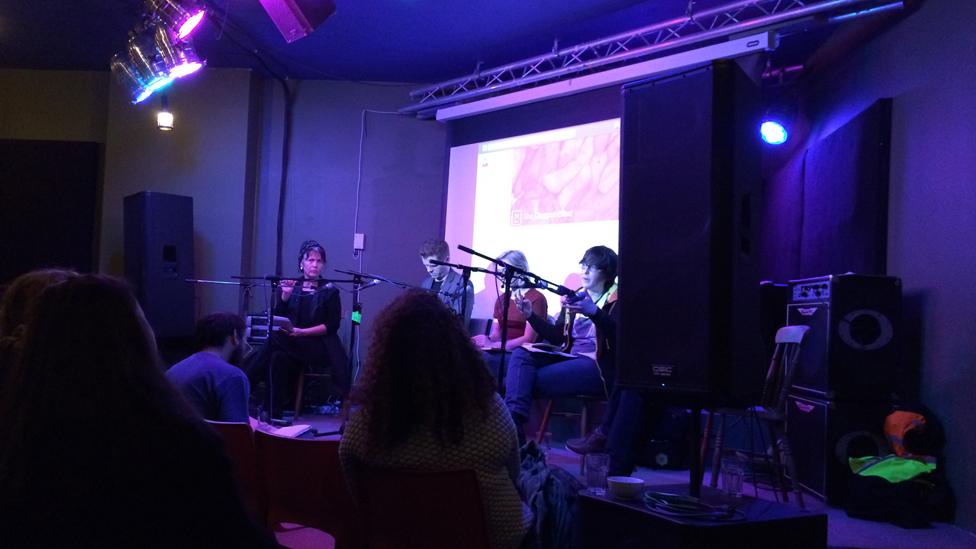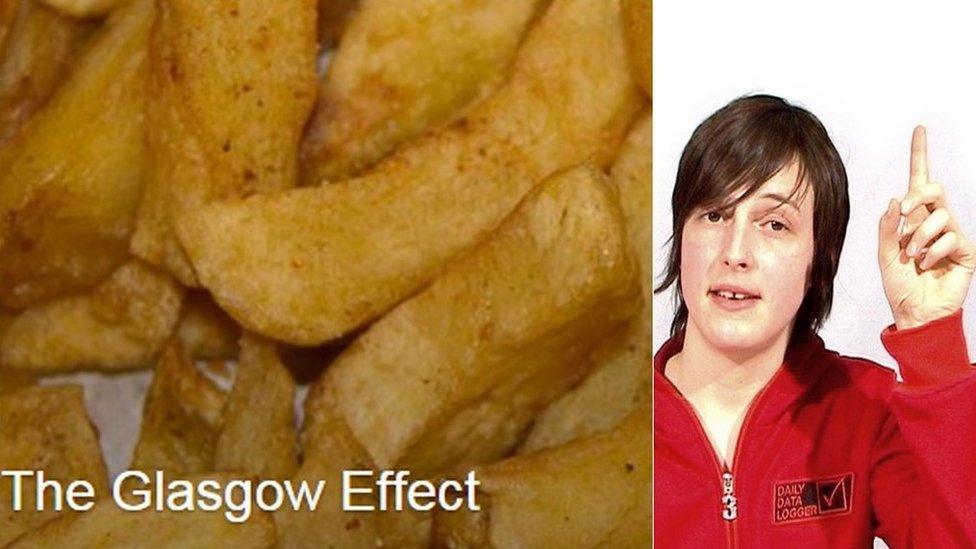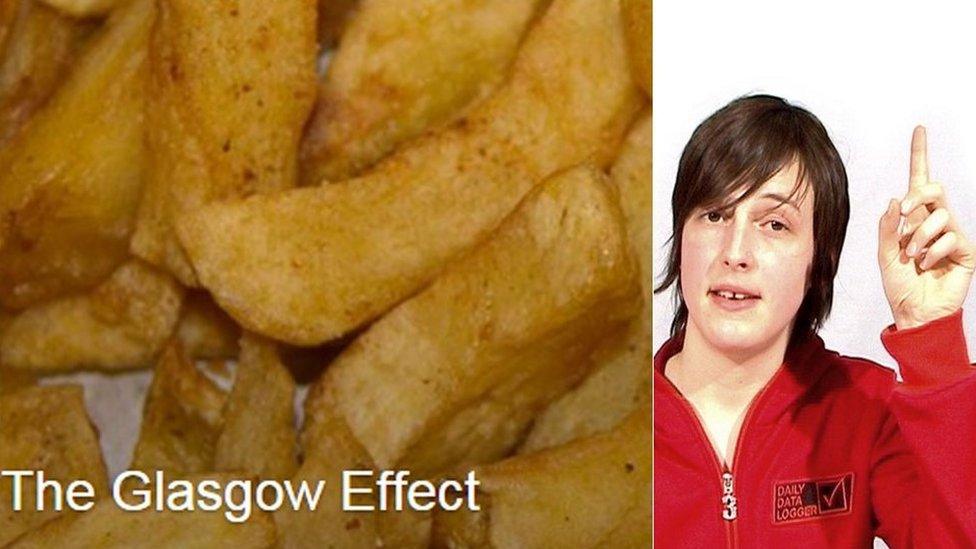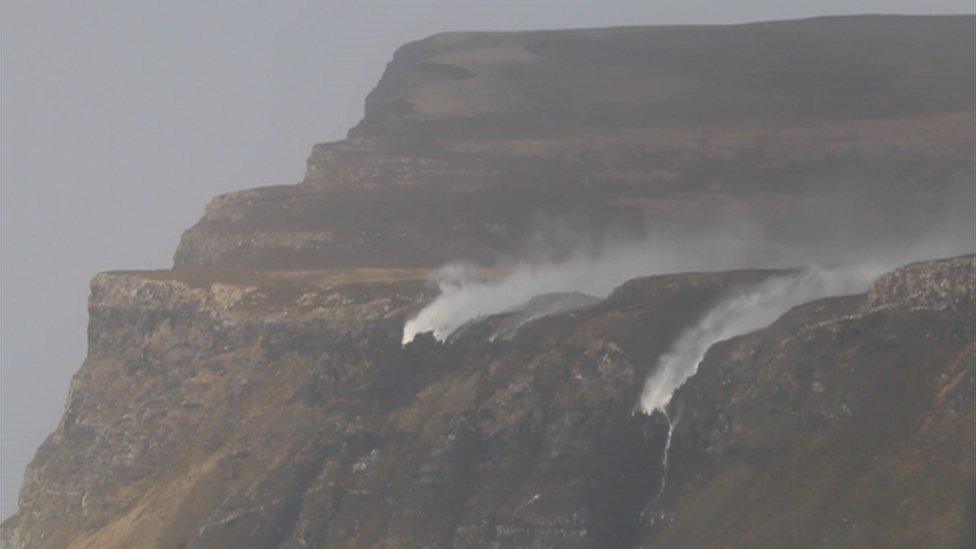Glasgow Effect artist Ellie Harrison has no regrets
- Published

Ellie Harrison has spoken publicly for the first time since the furore around funding of her project
The artist behind the controversial Glasgow Effect project, who sparked a row when she was awarded £15,000 from Creative Scotland, has spoken in public for the first time.
Ellie Harrison said she was shocked and overwhelmed by the response to her project which involves her deliberately staying within the confines of the city while monitoring its impact on her art.
Speaking to a sell-out audience in Glasgow, she said her project was more complex than media coverage had suggested.
The artist, who has been based in Glasgow since 2008, addressed the subject at an event organised by Imagination: Festival of Ideas.
Ms Harrison told her audience: "This project was always more than was contained in the (original) Creative Scotland funding application for Think Global, Act Local, a phrase I borrowed from Patrick Geddes.
"But this title felt a bit too worthy because I knew there was a darker side and I can't solve all of the world's problems on my own, no matter how hard I try."
Ms Harrison added: "So I decided to fit Think Global, Act Local into a larger frame called the Glasgow Effect, and in doing so, to zoom out and try and make visible the wider socio-economic forces at play.
"So it's a complicated and provocative project and I spent the last month, trying to unpick what it is exactly I'm doing and why it had the reaction it did at the start of the year."
Her project has been controversial.

Artist Ellie Harrison and the image she has used to publicise her Glasgow Effect project
At the start of January, a newspaper ran an article in which she was accused of taking a "poverty safari".
She was criticised on social media, and became the subject of a radio phone-in.
After being bombarded by requests for media interviews, she agreed to write an article for the website Commonspace.
She said the title the Glasgow Effect which refers to the city's lower life expectancy, was chosen as a contrast to the better known Glasgow Miracle, which refers to the city's successful contemporary artists.
Ms Harrison wrote: "For the last few years, I made a conscious decision to work in the public realm whether that's literally in the streets, online or in the mainstream media.
"I saw this as a way of critiquing our art institutions and of reaching people from all sorts of backgrounds who wouldn't normally set foot in a gallery.
"This is something the Glasgow Effect has clearly achieved. I see it as the role of the artist to stick their neck out, in order to raise important social and political issues and although I've had to deal with a barrage of personal attacks, making myself into a middle class punchbag, I don't regret the decision to use the title The Glasgow Effect."
Premature mortality
She added: "I was aware of the issues it would throw up but I wanted to expose the tale of two cities which is highlighted by two similar sounding phrases - the Glasgow Miracle - which is commonly used in the art world to refer to Glasgow's post industrial Renaissance as a global centre of culture - and the Glasgow Effect - which as we all know is its antithesis in PR terms."
"In terms of the phrase 'the Glasgow Effect' - we need to separate what it refers to and the catchphrase.
"There's already 17 different theories as to why this increased premature mortality happens in Glasgow but what it is, is a catchphrase, that is being used to fuel an industry of overpaid academics, coming to this city, writing countless reports, getting paid huge salaries and doing nothing about poverty, and that's exactly what the Glasgow effect is, and that's what I want to challenge and that's what I want to draw attention to."
Despite the furore, Ms Harrison said she would continue to work on her project, expecting it to take a year to complete, but could not confirm what form it would take.
She is also still in discussion with Creative Scotland and Duncan of Jordanstone College of Art and Design, where she works as a part-time lecturer, about allocation of money from the £15,000 grant and says she plans to make an announcement on her own website, external shortly.
- Published5 January 2016

- Published2 February 2016
